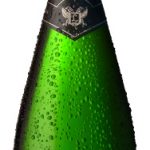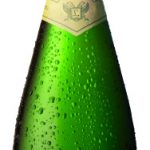
NATURE
The varieties that constitute this champagne are Chardonnay, Semillón and Pinot Noir. The grapes, carefully selected, come from our estates La Marthita and Canelli.
VINEYARD LOCATION
– Cruz de Piedra (Mendoza River’s High Valley), Maipú district, province of Mendoza.
– Tupungato district, province of Mendoza.
CLIMATE | This privileged area has a particular micro-weather characterized by dry summers, warm and sunny days and cold nights. Grape development is favored by the thermal range, making them reach high concentration of aromas and excellent health.
SOIL | Alluvial, silty-loam, shallow.
TRELLIS SYSTEM | Traditionally low espalier-trained vineyards. High cultivation density; low yield vines that, associated with the varietal purity, allow high quality grapes.
HARVEST | By hand, selecting the best clusters so as to have the best grapes for the winemaking. The harvesting moment depends on the grape ripening, a process that’s followed carefully to reach an optimum point with the highest aroma expression.
WINEMAKING | After their selection, the grapes are de-stemmed. This wine is made with the first free-run juice with no pressure applied, allowing to obtain characteristic and delicate aromas. Clear juice is fermented (no husks or sediments) at a controlled temperature (15 degrees Celsius). Selected yeast is used to have perfect must fermentation. After this process the juice undergoes clearing, low-temperature stabilization and filtering periods, to be able to blend the obtained wines in what is called the “base wine”.
SPARKLING WINEMAKING | Once the base wine is obtained, a second fermentation takes place. For this, liqueur de tirage is added (selected yeast in full activity and sugar). This is how we develop a fermentation process in stainless-steel tanks. At this point it’s crucial to keep a strict temperature control and keep it at 17 degrees Celsius, both for small-sized bubbles and to preserve aromas. The final pressure generated is of 5 atmospheres. The wine is kept in lying on lees for 6 months to develop aromas, flavors, complexity and body. At the end of this stage the wine is filtered and stabilized, adding then the expedition liquor (sparkling wine and sugar) to typify it and give a subtle profile. For its bottling, an isobaric filling machine is used at low temperature (1 degree Celsius below zero).
TASTING | Balanced, fresh, with persistent and thin bubbles with a delicate aroma of citrus fruits. The Chardonnay brings elegance and aromatic intensity, the Semillón confers unctuousness and the Pinot Noir gives structure and complexity. Ideal to accompany soft seasoned dishes. It is suggested to consume it within the year of bottling at a temperature between 6 to 8 degrees Celsius.
PRESENTATION
– 750 milliliters bottles.
– Cases: 6 x 750 milliliters bottles.
ANALYTICAL DATA
Alcohol 12.7%
Sugar 3 g/l.
Volatile Acidity 0.3 g/l. in acetic acid
Total acidity 5.18 g/l. in tartaric acid
SO2 total 96 mg/l.
pH 3.3



